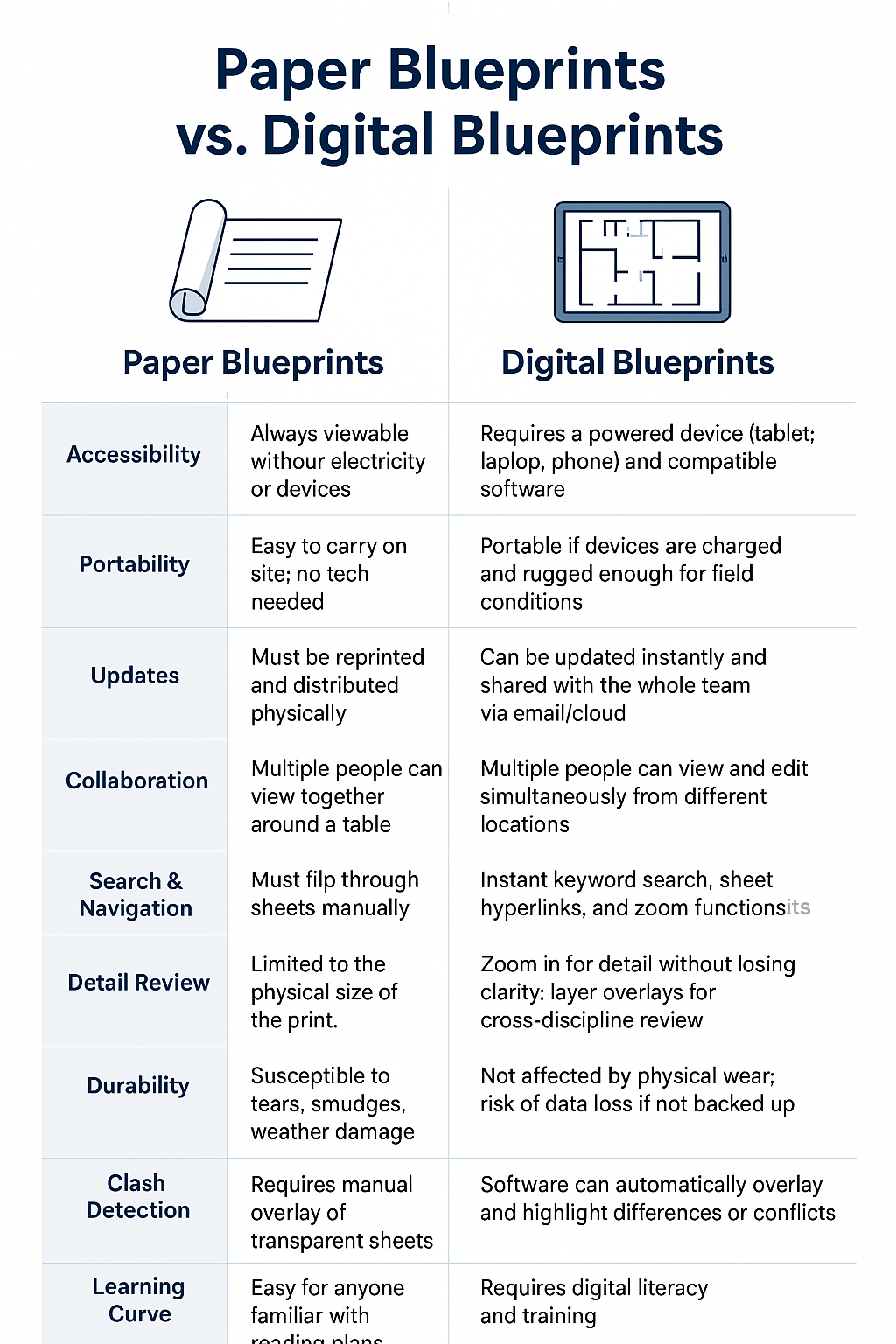Digital vs. Paper Blueprints: Which is Better for Your Project?
The construction industry is shifting from rolls of paper blueprints to tablets and large-format monitors. Both have their place — but which is right for your project?
In today’s construction industry, blueprints can be delivered and reviewed in two very different formats: traditional paper plans and modern digital plans. While both serve the same core purpose: to communicate the design intent and technical requirements of a project, they differ significantly in how they are accessed, managed, and used in the field. Paper blueprints are tangible, large-format drawings that can be rolled out on a table, marked up by hand, and viewed without the need for technology. They’re easy to read in bright sunlight, portable to any location, and allow multiple people to look over them at once. However, they require frequent reprinting to stay current, take up physical storage space, and are prone to wear, tear, and coffee stains. Digital blueprints, on the other hand, exist as PDF or CAD files that can be accessed through laptops, tablets, or even smartphones. They offer instant zooming for detail, quick searching for specific notes or dimensions, and the ability to overlay drawings for clash detection or compare versions to spot revisions. Updates can be shared instantly without waiting for a delivery, ensuring everyone is working from the latest version. The trade-off is that digital plans require a power source, compatible devices, and some level of technical skill to navigate. In practice, many projects use a blend of both—paper for broad field visibility and quick discussions, and digital for precision work, coordination, and keeping up with fast-moving design changes.
In the modern construction environment, the choice between paper and digital blueprints isn’t always an either/or decision. Most teams use both formats strategically. Paper plans remain invaluable for quick reference, open-table collaboration, and on-site discussions where rugged simplicity is key. Digital plans, meanwhile, excel at rapid updates, precise coordination, and advanced features like revision comparison and clash detection. Together, they create a hybrid workflow where the reliability of paper meets the efficiency and accuracy of digital technology, ensuring the project team can adapt to any situation and keep the build moving forward without delay.

